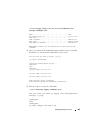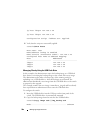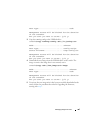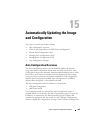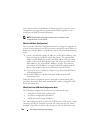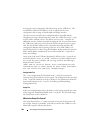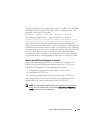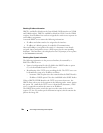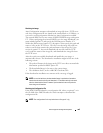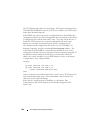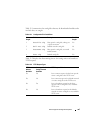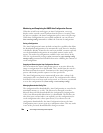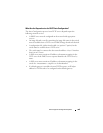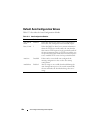
Auto Image and Configuration Update 393
The general format of the configuration file lines is as follows. The IP address
and subnet mask are required. The MAC address, configuration file, and
image file name entries are optional.
MAC_address IP_Address Subnet_Mask Config_File Image_File
The following example shows a *.setup example for two switches:
2180.c200.0010 192.168.0.10 255.255.255.0 switch-A.text N2000vR.5.4.1.stk
3380.c200.0011 192.168.0.11 255.255.255.0 switch-B.text N2000vR.5.4.1.stk
After a line has been read and implemented by the Auto Configuration
feature, it automatically adds “in-use” to the end of the line to ensure that the
information is not used for the next switch. To replicate the entire USB auto
configuration process, the “in-use” statements from the .setup file need to be
removed. Then, if the process is restarted, the MAC address/IP address
combinations will be ensured for any switch that has previously attempted
upgrade and all other switch upgrades can take place as if for the first time.
What Is the DHCP Auto Configuration Process?
If the USB Auto Configuration fails or is not used, the switch can use a
DHCP server to obtain configuration information from a TFTP server.
DHCP Auto Configuration is accomplished in three phases:
1
Assignment or configuration of an IP address for the switch
2
Assignment of a TFTP server
3
Obtaining a configuration file for the switch from the TFTP server
Auto Configuration is successful when an image or configuration file is
downloaded to the switch or stack master from a TFTP server.
NOTE: The downloaded configuration file is not automatically saved to startup-
config. You must explicitly issue a save request (copy running-config startup-
config) in order to save the configuration.



